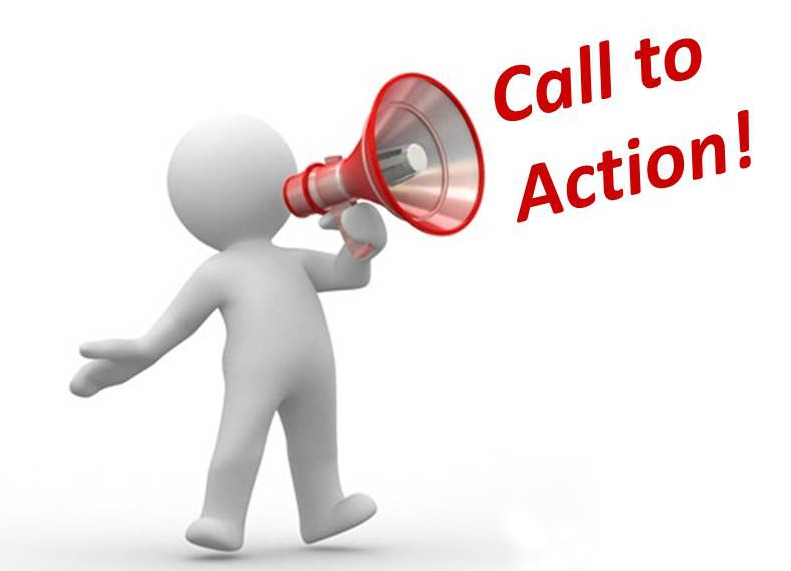When you give a speech, you want your audience to think, feel or do something differently than before, right? Even if your speech is primarily informative in nature, don’t you want your audience to do something with the new information? Don’t you want them to consider your ideas and apply them in some way?
In my opinion, almost every speech needs some sort of call-to-action. If I have somehow been changed by a speaker, I want to DO something about it. The speaker does me a great favor by telling me what to do!
But don’t just commando in a call-to-action at the end of your speech. You may have captivated your audience with your speech, but if you drop a call-to-action in out of the blue, they will feel like they’ve been taken prisoner by a poser, someone who seemed to be authentic until the end. You need to build up to a call-to-action with both logic and emotion. An effective call to action is the crescendo of your speech.
As you build toward that call-to-action in your conclusion, not only should you summarize the “logic” or main points, but you also should help your audience relive the powerful emotions they felt during a story or example earlier in your speech by referring back to it (or completing a story). In many cases, giving your audience the exact next step to take is appropriate (“vote for me” “buy this program” “if you promise to never text while driving, stand with me”).
The basic steps to adding an effective call-to-action to your conclusion are these:
1. Transition from last point.
2. Summarize main points.
3. Pull the heart-strings. Refer back to something in your speech that creates a strong emotion.
4. Call-to-Action
Craft your call-to-action statement with care. Consider using rhetorical devices to create a memorable statement.
 For example, at the end of President Kennedy’s inaugural address, he said, “Ask not what your country can do for you–ask what you can do for your country.” Kennedy’s call to action was a call to altruism (collectivism)–to give more than to take. He also used a reverse echo rhetorical device (reversed the words for a different meaning).
For example, at the end of President Kennedy’s inaugural address, he said, “Ask not what your country can do for you–ask what you can do for your country.” Kennedy’s call to action was a call to altruism (collectivism)–to give more than to take. He also used a reverse echo rhetorical device (reversed the words for a different meaning).
Your last words will probably be the first words your audience remembers, so give them a memorable call-to-action!

